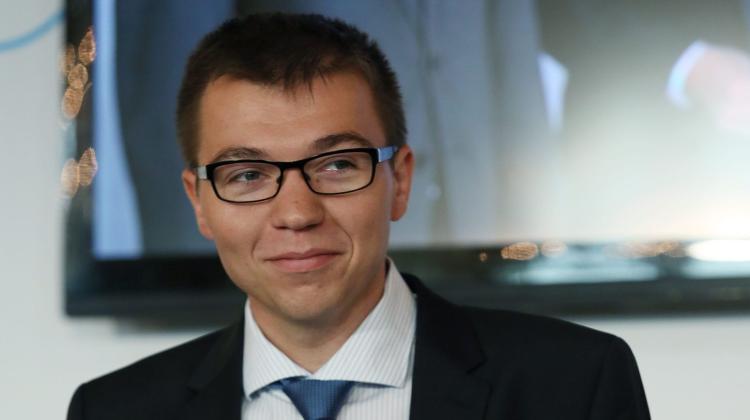Quantum simulations - a solution for the next generation of materials
 Dr. Michał Tomza. Photo: PAP/Tomasz Gzell 23.05.2015
Dr. Michał Tomza. Photo: PAP/Tomasz Gzell 23.05.2015
Most materials are still discovered by trial and error, because it is difficult to predict the right arrangement of atoms. Dr. Michał Tomza from the University of Warsaw proposes to use quantum simulations to understand the properties of materials that are being designed.
The research of Dr. Tomza from the University of Warsaw Centre of New Technology will help to produce modern materials such as superconductors that would operate at room temperature. Nowadays, very low temperatures, close to absolute zero, are usually needed in order to observe superconductivity.
High-temperature superconductors would be very practical. They would significantly reduce electricity transport losses (now up to 30-40%). If we could transport current via superconducting materials at room temperature, these losses would be reduced to zero. Superconductivity can also be used, for example, to build faster terahertz processors and maglev trains. Dr. Michał Tomza and his team\'s research may revolutionize these areas.
"The solution we propose is to use quantum simulations to better understand the laws of physics governing materials at the atomic level" - Dr. Tomza told PAP. At present, it is still extremely difficult to predict theoretically how atoms should be arranged in the material at the microscopic level to obtain the desired macroscopic properties. "The goal is to develop the model to arrange atoms in such a way as to obtain, for example, a superconductor at high (room) temperature" - added Dr. Tomza.
For theoretical calculations, Dr. Tomza\'s team describes the behaviour of systems consisting of cold atoms. "We are able to arrange atoms in such a way that they behave in our system similarly to electrons in a superconductor. At the same time, we have a lot of control over them" - said Dr Tomza.
About 10 years is needed before the idea can be implemented on an industrial scale, the scientist estimates, but breakthrough discoveries in the field of advanced materials may happen in the next five years. At the moment, basic work is under way.
"We still have no idea where to look for materials that will be superconducting at room temperature. It would be a revolution and we want to contribute to it" - added Tomza.
The scientist presented his idea at the Falling Walls Lab on Wednesday in Berlin. 100 young scientists from around the world participated in the competition, including two Polish researchers. The second Polish participant was Jakub Jankowski from the Institute of Theoretical Physics of the University of Warsaw, who talked about the holographic principle and its possible use in solving the problem of quark trapping.
Young scholars are invited to participate in Falling Walls Lab. They can be graduate students, PhD students and doctors. The competition is open to all fields of knowledge. Presentations are judged by the jury composed of prominent members of the academic world, research units and business.
The Falling Walls Lab accompanies the Falling Walls conference. During the meeting, renowned scholars, including Nobel Prize winners, present innovative discoveries and concepts that break the cognitive patterns. Researchers represent a broad spectrum of sciences: biology, chemistry, computer science, social sciences, political science.
From Berlin Szymon Zdziebłowski (PAP)
Science in Poland
szz/ agt/ kap/
tr. RL
Przed dodaniem komentarza prosimy o zapoznanie z Regulaminem forum serwisu Nauka w Polsce.















